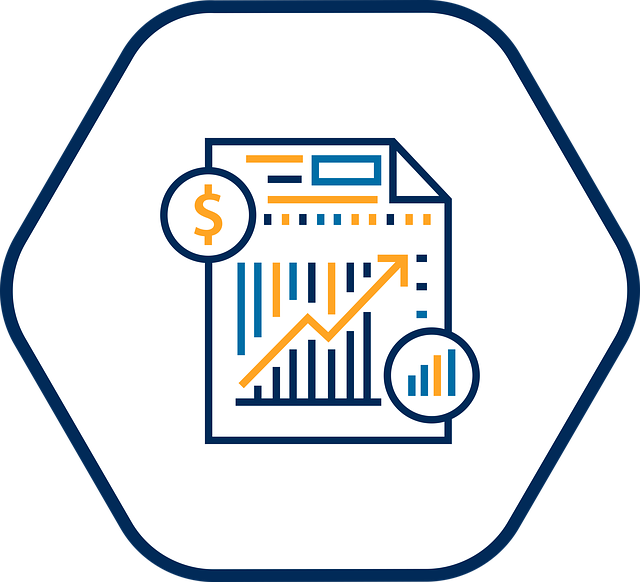The Sarbanes-Oxley Act (SOX) sets a robust framework for financial reporting transparency and corporate governance, requiring certified public accountants (CPAs) to ensure their IT systems meet stringent standards. CPAs play a vital role in guiding organizations towards SOX compliance by implementing strong access controls, automating processes, and enhancing data security. This involves cultivating a culture of integrity, maintaining detailed records, and collaborating with IT professionals and legal advisors. Effective access control measures, such as segregation of duties and regular reviews, minimize risks. Meticulous documentation is key for internal reviews and external audits, demonstrating SOX adherence and fostering trust. Proactive monitoring and leveraging advanced tools enable accountants to stay ahead of evolving regulations, mitigating compliance risks.
“In the dynamic landscape of finance, CPAs play a pivotal role in ensuring the integrity and security of financial IT systems. With regulatory requirements like Sarbanes-Oxley (SOX) acting as a cornerstone, this article delves into the essential elements of maintaining compliance. From data security to access controls, documentation, and continuous monitoring, we explore the critical areas that CPAs must navigate. Understanding SOX compliance is crucial for accountants, as it fosters transparency and safeguards financial reporting integrity.”
- Understanding SOX Compliance: A Cornerstone for Financial IT Systems
- The Role of CPAs in Ensuring Regulatory Adherence
- Key Areas of Focus: Data Security and Integrity
- Implementing Robust Access Controls: Who Gets What Access?
- Documenting Processes: Keeping Records for Transparency
- Continuous Monitoring: Staying Ahead of Regulatory Changes
Understanding SOX Compliance: A Cornerstone for Financial IT Systems

Understanding SOX Compliance is paramount for CPAs aiming to ensure their financial IT systems meet regulatory requirements. The Sarbanes-Oxley Act (SOX), enacted in 2002, established a robust framework to protect investors by enhancing corporate governance and accountability in public companies. For accountants, this means implementing stringent audit trails and access controls within IT systems handling financial data. SOX compliance is not just about ticking boxes; it involves cultivating a culture of transparency and reliability in financial reporting.
Regulatory data systems must be designed with SOX principles in mind, ensuring they can provide detailed, verifiable records of financial transactions. Access controls accounting plays a vital role in limiting access to sensitive data, mitigating risks of fraud or unauthorized alterations. By embracing these practices, CPAs demonstrate their commitment to maintaining the integrity of financial information, instilling confidence among stakeholders and fulfilling their oversight roles effectively.
The Role of CPAs in Ensuring Regulatory Adherence

Certified Public Accountants (CPAs) play a pivotal role in ensuring that financial IT systems adhere to regulatory compliance requirements. With the increasing complexity and digitization of financial reporting, CPAs are at the forefront of navigating the intricate web of regulations like Sarbanes-Oxley (SOX). They bring a deep understanding of accounting principles, internal controls, and data integrity, which are essential for SOX compliance. By integrating IT for financial reporting, CPAs can automate processes, enhance data security with robust CPA file security measures, and streamline audit trails, thereby improving efficiency and accuracy.
Moreover, the expertise of CPAs extends to managing legal risks associated with IT systems. They work closely with IT professionals and legal advisors to implement IT legal support solutions tailored to specific business needs. This collaborative approach ensures that financial IT infrastructure not only meets regulatory standards but also addresses potential legal pitfalls, fostering a culture of compliance within organizations.
Key Areas of Focus: Data Security and Integrity

In ensuring financial IT systems meet regulatory compliance requirements for CPAs and SOX-compliant organizations, data security and integrity stand as paramount areas of focus. The Sarbanes-Oxley Act (SOX) mandates robust internal controls over financial reporting processes, extending to the digital realm. This involves implementing access controls accounting mechanisms to safeguard sensitive financial data from unauthorized access or alterations. Accounting compliance IT tools play a pivotal role in upholding data integrity by tracking changes made to critical records and ensuring all modifications are traceable and approved.
Additionally, proper data retention policies are essential for CPAs to maintain accurate and complete financial records over extended periods. These measures not only support SOX compliance but also bolster the overall reliability of accounting practices, fostering trust in the financial reporting process. Effective data security protocols, combined with well-defined access controls accounting procedures, contribute significantly to maintaining the integrity of financial information, thereby reinforcing public confidence in the organization’s reporting accuracy and transparency.
Implementing Robust Access Controls: Who Gets What Access?

Implementing robust access controls is a cornerstone of SOX compliance for CPAs. It ensures that only authorized personnel have access to sensitive financial data and systems, thereby minimizing risks associated with unauthorized modifications or disclosures. This involves meticulous segregation of duties, where critical functions are divided among different users, reducing the potential for fraudulent activities. Access permissions should be granted on a need-to-know basis, meticulously documented, and regularly reviewed to reflect changes in roles or responsibilities within the accounting team.
Effective access controls also entail robust audit trails IT systems that log user activities, detailing who accessed what data, when, and for how long. These logs serve as invaluable resources during internal and external IT audits for accountants, providing a clear trail of actions taken on financial records. Regular compliance monitoring and testing of these access control mechanisms are essential to ensure they remain airtight, aligning with the continuous evolution of regulatory requirements and best practices in accounting.
Documenting Processes: Keeping Records for Transparency

Maintaining comprehensive records is a cornerstone of SOX compliance for accountants. CPAs must ensure every step of financial processes is well-documented to foster transparency and accountability. This involves meticulously recording data retention practices, system access changes, and audit trails, among other critical aspects. Such detailed documentation not only facilitates internal reviews but also serves as robust IT legal support for CPAs during external audits.
Effective process documentation enables IT audits for accountants by providing clear evidence of adherence to regulatory standards. By keeping accurate records, CPAs can demonstrate compliance with SOX regulations, thereby enhancing trust and ensuring smooth operations. This proactive approach not only safeguards against potential legal issues but also fosters a culture of integrity within the financial IT systems environment.
Continuous Monitoring: Staying Ahead of Regulatory Changes

Maintaining regulatory compliance in financial IT systems is a dynamic process that requires constant vigilance. CPAs and accounting firms must implement continuous monitoring to stay ahead of evolving regulations, such as SOX requirements. This proactive approach ensures that any changes in legislation or industry standards are promptly identified and addressed within their data systems.
By employing advanced CPA file security measures and regulatory data systems, professionals can automate the process of monitoring for compliance. Accounting compliance IT tools play a crucial role in this regard by providing real-time alerts and updates on relevant regulatory changes. Such tools enable CPAs to quickly adapt their practices and systems, thereby mitigating potential risks and penalties associated with non-compliance.
